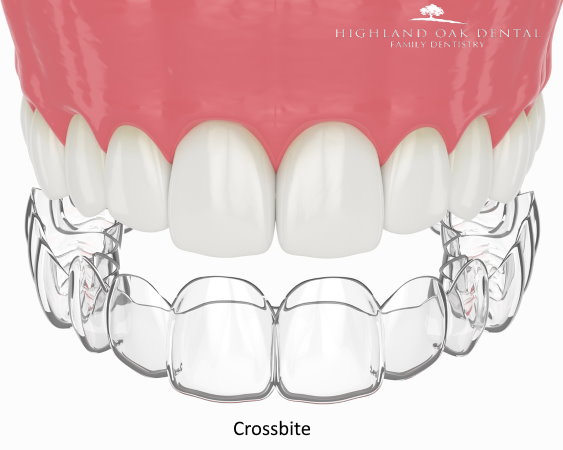- 214-308-5359
- Mon – Fri: 9:00 AM – 5:00 PM
- 5444 FM 423 Ste 600, Frisco, TX 75036
A crossbite is prevalent in youngsters and it doesn’t normally correct itself as they get old. The misalignment may develop in the front teeth, the rear teeth, or both. The ramifications of this malocclusion might be catastrophic if it is not addressed quickly. Occlusion is the way the teeth touch as the upper and lower jaw come together.
What Causes Crossbite? | Types of Cross bites | What issues do Crossbites cause? | How to Treat Crossbite Teeth | Crossbite Vs Underbite

A crossbite develops when the upper jaw is so thin that it lies inside the lower jaw while the mouth is closed. A crossbite may take various forms and all be repaired by an orthodontist. This might not only make you concerned about your grin but also make eating unpleasant. It may potentially progress to serious disorders such as Temporomandibular Joint Disorder (TMD) (TMD). TMD may cause discomfort and jaw joint difficulties in the muscles that govern jaw movement. Highland Oak Dental can help you uncover the core source of the issue and avoid TMD. Learn overcrowding.
In dentistry, there are two forms of crossbite, anterior and posterior. Anterior crossbite occurs when the front tooth or teeth rests within the lower jaw. Posterior crossbite occurs at the rear of the jaw. Posterior crossbites are more prevalent as it happens in 16 percent of youngsters whereas anterior occurs in roughly 4 to 5 percent in children.
The common cause of crossbite in children is heredity. It is a hereditary ailment that the father, mother, or direct family members may have endured known or unknown. Other reasons of crossbite include thumbsucking, extended use of pacifier, nail biting, or the delayed loss of primary tooth or teeth. Oversized tonsils or adenoids might also contribute to the etiology of this illness. Dr. Prakash Gadhiya may assist to discover the reason of your crossbite and recommend what can be done about it.
When you have a misaligned bite, you are prone to encounter dental difficulties, bruxism, health, open bite malocclusion, and psychological concerns. The impact of biting that is misaligned may cause tooth decay, gum disease and puts stress on the jaw muscles, which can subsequently lead to chronic jaw disorders, neck, shoulder, and back discomfort. Read about tongue thrust.
Early identification and management of this disease is vital since it may notice and stop the habit to avoid dental and skeletal repercussions in the future. No medicine can heal this disease; consequently, if it is not addressed until it became worse, it will need orthognathic surgery (one of several medical specialties) to remedy it.
The orthodontist installs a device placed on the palate and fastened to the upper teeth. The gadget progressively opens the upper palate by the usage of a particular key on the device. This gadget is especially helpful in youngsters when the palates are still expanding.
This is a device used by adults to broaden the upper palate a few changes at a time. It is generally worn every night until the desired effect is attained.
Getting braces is a lasting remedy not just for crossbite but for many sorts of bite disorders. Under this procedure, dental braces are used as appliances to adjust the placement of the teeth and jaw. After braces treatment is complete, a retainer (orthodontics) is used to keep the teeth in the right place.
The surgeon will purposefully shatter the jawbones in multiple locations after the patient wears a custom-made gadget. Surgery provides for a larger extension than what the palate expanders can deliver.
At Highland Oak Dental, our vision is to establish a trusted dental practice renowned for exceptional care, rooted in quality, compassion, and a comprehensive approach.